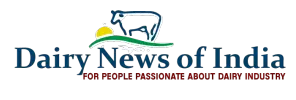Source:fnbnews.com
We are all well aware that nutrition is essential for us to sustain growth and maintain good health. But nowadays everyone is talking about the influence of diet and nutrition in not just maintaining our health but also in fighting against diseases. The perception of food and nutrition has evolved over the years from just survival, hunger satisfaction, absence of adverse effects on health to its current emphasis on promoting better health and well-being, helping reduce risk of chronic diseases and so on.
Apart from this knowledge and awareness, consumers are looking for natural options than processed and prepared foods. Owing to this, there has been an increase in emergence of many new segments in the nutrition & wellness sector, also a lot of research is being carried out on natural ingredients and foods.
One such natural food which has been widely researched is ‘milk.’ Milk is the most basic food that we consume, right from our birth. It is considered as the nature’s perfect food since it has got the unique power to sustain life at all stages of development right from childhood to old age. The importance of milk has also been profoundly expressed in Charak Samhita as well as Atharva Ved.
Traditionally we all have been consuming milk in its pure form since ages but the scenario has now changed. Today we all are in need of increased nutrition to meet daily requirements as the foods that we otherwise consume are low in nutrition. With respect to this, there have been lot of innovations in milk and milk products changing the way that milk was represented earlier.
The increasing availability of milk and milk products has led to a lot of changes in the consumption pattern and basket of Indian consumers over the period of time. Now there are a number of variants of milk depending upon their composition or content. Consumers are more and more modifying their eating habits for health reasons. There is rising demand of consumers for more healthy variants of milk & milk products such as skimmed, low fat, double toned milk, high protein yogurt, products enriched with pre & probiotics and so on. The milk is processed in order to obtain these healthy variants. During processing, the essential nutrients from milk are lost thus to compensate for these lost nutrients, manufacturers fortify the milk with nutrients.
Functional components in milk
Milk is composed of a numerous health benefiting components and it has been observed that many of them have nutraceutical potential. Based on the components of milk and their nutraceutical potential, the dairy nutraceuticals market can be segmented in following families: Whey and protein fractions; Bioactive peptides; Probiotics & prebiotics; Lactose derivative; Vitamins & minerals.
The macro & micro components of milk have the potential of being nutraceuticals themselves. Due to increasing awareness, the dairy benefits are understandable to the average consumer and dairy products available are affordable even with value-added benefits.
Applications of dairy Ingredients in nutraceuticals
The dairy industry is currently rightly positioned to profit from the most important consumer trends shaping the food industry.
Yogurt and yogurt-based products

Driven by growing consumer desire for convenient and health promoting products, especially functional foods, the global yogurt market is projected to surpass $67 billion by 2015. With the increasing awareness about probiotics as well as broad consumer acceptance of packaged yogurt and frozen yogurt products which satisfy the lifestyle and convenience needs of consumers, the market is expected to grow further.
Whey proteins
The sports foods market is a major segment for dairy ingredients. According to a study by prnewswire, the global whey protein market is expected to reach $13.5 billion in 2020 from $9.2 billion in 2015, with a CAGR of 6.5% for the period of 2015-2020. Also the sports nutrition as a segment is expected to reach $1.7 billion in 2015 and $2.7 billion by 2020 increasing at a CAGR of 9.0%. The sales of sports nutrition products, most of them based on whey protein, have doubled in India since 2007 to reach $396 million in 2013. With increase in fitness & health-consciousness this category is expected to witness an exponential increase.
The various applications of whey protein are represented below:
Use of milk in infant formulas
The Infant formula market is one of the most developed sectors for the use of dairy nutraceuticals ingredients. There has been generalisation of specific infant formulas such as hypoallergenic formulas, pre-term formulas or formulas to prevent diarrhoea using milk hydrolysates and other specific dairy ingredients. The infant formula manufacturers are now targeting formulas that mimic mother’s milk. Substantial research is also being done on new nutrients from bovine milk to reproduce mother’s milk. The dairy protein fractions such as alpha-lactalbumin, are in growing stage.
Milk is fortified for various reasons – Increase the Calcium content (using ultra filtration), avoid allergy problems (ß-lactoglobulin), improve the survival of probiotic bacteria for increased immunoprotection, protein standardisation-property leading to better utilisation of dairy products, increase marketability of dairy products and so on.
Food supplements
The sale of food supplements is on the rise for past 2-3 years. From the point of dairy ingredients business, this market segment is very important and is now opening to a number of fractions such as the use of alpha-lactalbumin in products for relaxation & anti-anxiety, lactoferrin in blends, ß-lactoglobulin in products for high blood pressure, cGMP in appetite regulation, IgG supplement to antibodies.
Use of milk in medical foods
The medical foods market revenues (India): expected to reach approximately US$ 4.2 billion in 2017. Milk is widely used in medical foods special formulations for clinical conditions such as premature infants or for infants with special inborn errors of metabolism and so on.
Milk as a carrier for nutraceuticals & other bioactive ingredients
Milk has been widely used as a carrier / vehicle for various bioactive components. Milk beverages and yogurt are such milk-based products which are widely used as vehicles to deliver non-dairy bioactives, such as phytosterols and Omega-3 fatty acids. A recent development in this area is the use of milk proteins for encapsulation and delivery vehicles of bioactives in functional foods.
Dairy market
The current market size of the dairy industry in India is Rs 2.6 trillion and is estimated to grow up to Rs 3.7 trillion by 2015. The market share of milk and milk products can be further bifurcated into dairy-based nutraceuticals variants. In case of dairy nutraceuticals products, Japan is globally the most advanced market, where nutraceuticals dairy products represent up to 44% of the total dairy market. The major Asian markets like India and China, also some European markets are following this trend. According to a study, the probiotic food and beverage products have increased greatly over the years, with yogurt continuing to be the most popular delivery vehicle. In countries like the US, probiotic-fortified kefir beverages have also become more popular along with probiotic-enhanced cheeses and yogurts.
Comments
comments























